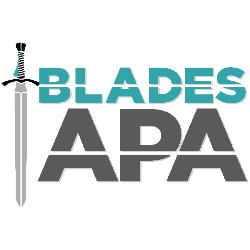The Importance of Strength
/
Allow me to clarify one thing; exercise is not the same as training. If you have goals (and you must in order to improve in any aspect), then you should be training. Exercise that includes randomized techniques whereas the idea is to become exhausted, sore, or “thrashed,” is simply punching a time clock to elicit effects felt that day. Training is not about today but rather a process to get to where you want to go. Strength is the basis of all human movement, no matter what age, gender, background, or genetics. Gaining physical strength is bar-none the most beneficial activity anyone can do in the gym. Whether your goals are aesthetics based, performance based, or functionally based, increasing strength is the only answer.
“Well then, how do I get stronger?”
Good question. Short answer: lift heavy things. To get the most bang for your buck in the gym, elicit free weights (mainly a barbell) that recruit large musculature over a full range of motion. Designing workouts for strength is accomplished by choosing a movement in each of the following categories.
-Knee dominant ex.) squat/lunge
-Hip dominant ex.) deadlift, good morning
-Push ex.) bench press, push-up
-Pull ex.) rows, pull-ups
An explosive move plus auxiliary and core stability lifts can be done to accompany these four main movement classes.
“Great, I have some moves, now what?”
Work on your form. You have the rest of your life to load up the bar and actually become strong. I highly recommend watching or reading items from strength coach Alan Thrall, or the people at Starting Strength. Some of the main problems I see to focus on would be learning to hip hinge properly, squat below 90 degrees without a forward weight shift, and horizontal pressing with hands placed directly below the shoulders while not allowing elbows to flare outward.
“My form rocks, so do this as often as I can right?”
No. You do not get strong from lifting weights but rather recovering from your bout of training. That is where adaptation occurs. The sweet spot for strength training occurs at 3-4 days per week, with the other 3-4 days being active recovery. Simply, if muscles are continuously broken down and not given adequate time to adapt, that is where overtraining injuries, plateauing, and eventual abandonment of the program occurs out of frustration. Give yourself a break once in a while!
“Got it. So then do as much weight as I can on my training days?”
You are on the right track. Tons of reps do not get you “toned.” In general, when a move is done 12+ times that is considered an endurance exercise. Muscles that are more prone to utilizing oxygen (endurance) are actually smaller and less visible than anaerobic musculature. Strong muscles are large muscles, and large muscles under a small percentage of overall body fat look good and function better, so the focus should be on getting larger stronger muscles. It is MUCH harder than it sounds. Nobody becomes “bulky” overnight, or even over a course of a year for that matter. It is much easier to regress from that bulkiness if desired than it is to actually get there in the first place. DO NOT BE AFRAID OF BIG WEIGHTS. If you are just starting a strength program, an easy route to take is doing 5 sets of 5 reps on each of your main movements for the day, adding weight each set, as well as increasing weight from week to week.
“Great. Is there anything else I should know right now?”
Enjoy the process. Training is hard but it can be used as a release from the norm. There are countless ways to accomplish aspirations so find a system that works for you yet still incorporates some of these previously listed essentials. Keep things fun while relishing the development of the person you will become.

